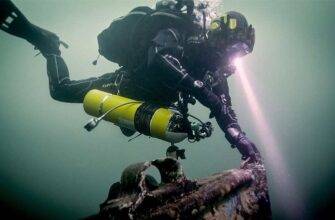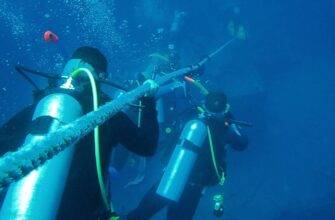Light usually only penetrates into the uppermost layers of a body of water – these layers are called the photic zone. Light only reaches the bottom of bodies of water where the water is clear and the depth is shallow. In the clearest water, light can penetrate to a depth of 600 m (though in negligible amounts), but it usually reaches a depth of 100 m.
Only 2% of ocean waters receive a significant amount of light because the water scatters and absorbs it. Fresh water bodies often have a relatively large photic zone due to their shallow depth.
The depth to which light penetrates depends on how clear or murky the water is in a given location. In coastal waters where coastal runoff enters, light can penetrate no deeper than 3 meters. In the clearest water water spectrophotometer (a device used to measure the intensity of radiation in different parts of the spectrum) detects light up to a depth of 590 meters.
However, as mentioned above, a noticeable amount of light only penetrates to a depth of about 100 meters, although at a depth of 150 meters there may be enough light for the human eye to see something.
Although the lower boundary of the of the photic zone may fall as low as 200 m, the most productive area occupies the upper, near-surface portion of the photic zone. This part of the photic zone is called the euphotic zone.
The euphotic zone occupies only about 1% of the ocean, but the vast majority of living organisms are concentrated here, thanks to the light on which they all depend directly or indirectly. In this zone, photosynthetic organisms convert light energy into the biological cycle. The lower part of the photic zone is called the dysphotic zone.
Light reaches this zone, but not enough to sustain a significant number of photosynthetic organisms.
Read More:




